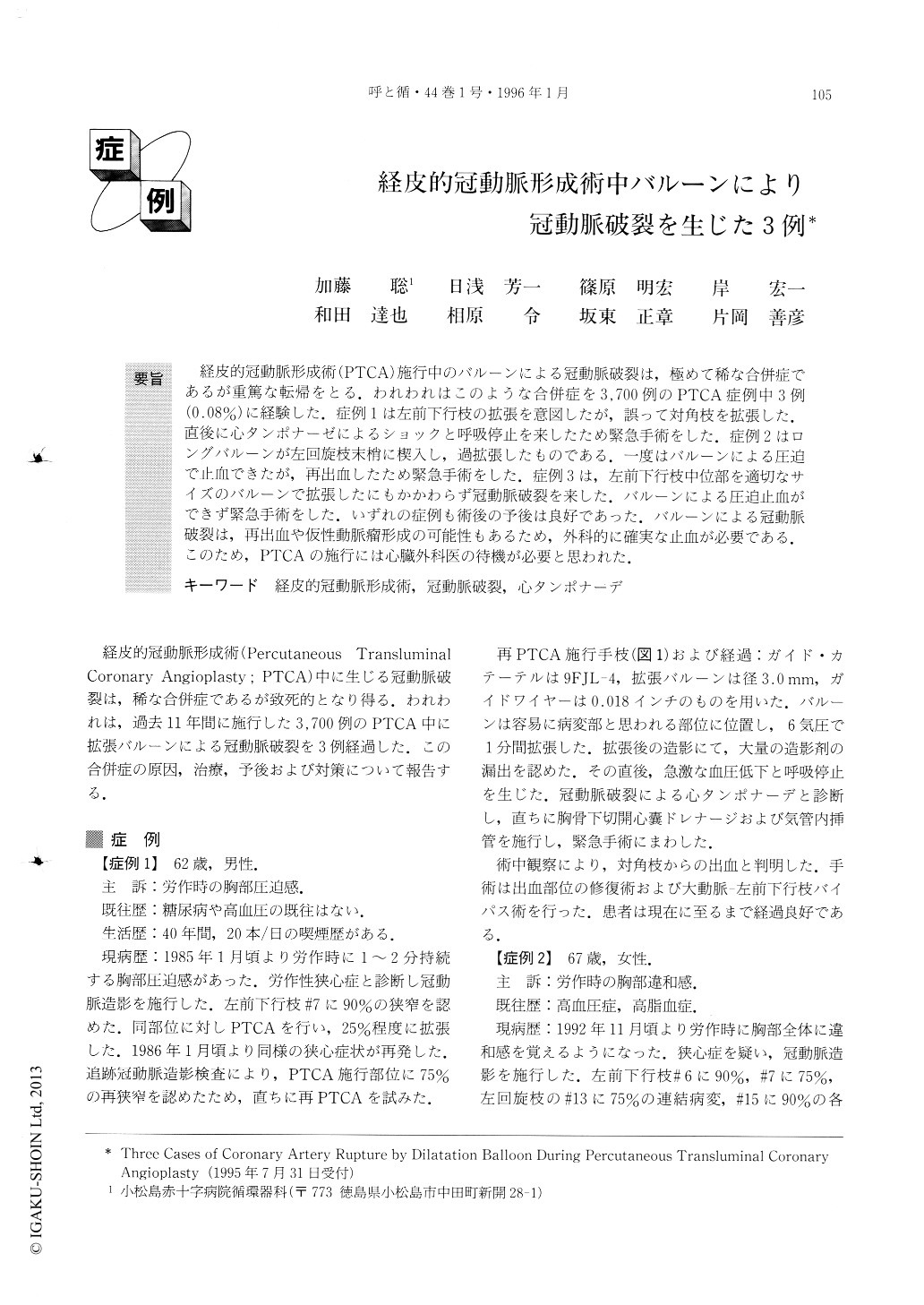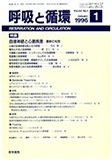Japanese
English
- 有料閲覧
- Abstract 文献概要
- 1ページ目 Look Inside
経皮的冠動脈形成術(PTCA)施行中のバルーンによる冠動脈破裂は,極めて稀な合併症であるが重篤な転帰をとる.われわれはこのような合併症を3,700例のPTCA症例中3例(0.08%)に経験した.症例1は左前下行枝の拡張を意図したが,誤って対角枝を拡張した.直後に心タンポナーゼによるショックと呼吸停止を来したため緊急手術をした.症例2はロングバルーンが左回旋枝末梢に楔入し,過拡張したものである.一度はバルーンによる圧迫で止血できたが,再出血したため緊急手術をした.症例3は,左前下行枝中位部を適切なサイズのバルーンで拡張したにもかかわらず冠動脈破裂を来した.バルーンによる圧迫止血ができず緊急手術をした.いずれの症例も術後の予後は良好であった.バルーンによる冠動脈破裂は,再出血や仮性動脈瘤形成の可能性もあるため,外科的に確実な止血が必要である.このため,PTCAの施行には心臓外科医の待機が必要と思われた.
Coronary rupture by a dilatation balloon is rare but serious complication during percutaneous transluminal coronary angioplasty (PTCA). In a series of 3700 PTCAs we encountered this complication in only three cases (0.08%). In case 1, we attempted angioplasty for a lesion of the left anterior descending artery (LAD), however, through misjudgment we dilated the diagonal branch. Cardiac shock and respiratory arrest frompericardial tamponade quickly developed. The patient received urgent surgical treatment. In case 2, the wedge of a long balloon led to the coronary rupture of the left circumflex branch. The patient was treated surgically because of re rupture after removal from the labora-tory. In the third case, although the balloon size and LAD diameter were matched, LAD rupture occurred. The patient was treated by pericardiocentesis and liga-tion of LAD. All three cases had a good subsequentclinical course after surgery. We judged that coronary rupture by dilatation balloon required complete surgical treatment because of the possibility of re-rupture or pseudoaneurysm formation. and a stand-by cardiac surgeon was present for PTCA procedure.

Copyright © 1996, Igaku-Shoin Ltd. All rights reserved.


